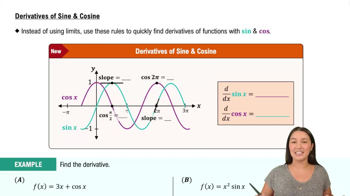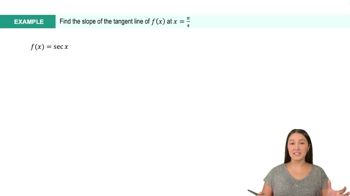[Technology Exercise] Roots
Let ƒ(𝓍) = 𝓍³ ―𝓍― 1.
a. Use the Intermediate Value Theorem to show that ƒ has a zero between ―1 and 2 .
 Verified step by step guidance
Verified step by step guidance Verified video answer for a similar problem:
Verified video answer for a similar problem:



 5:53m
5:53mMaster Finding Differentials with a bite sized video explanation from Patrick
Start learning